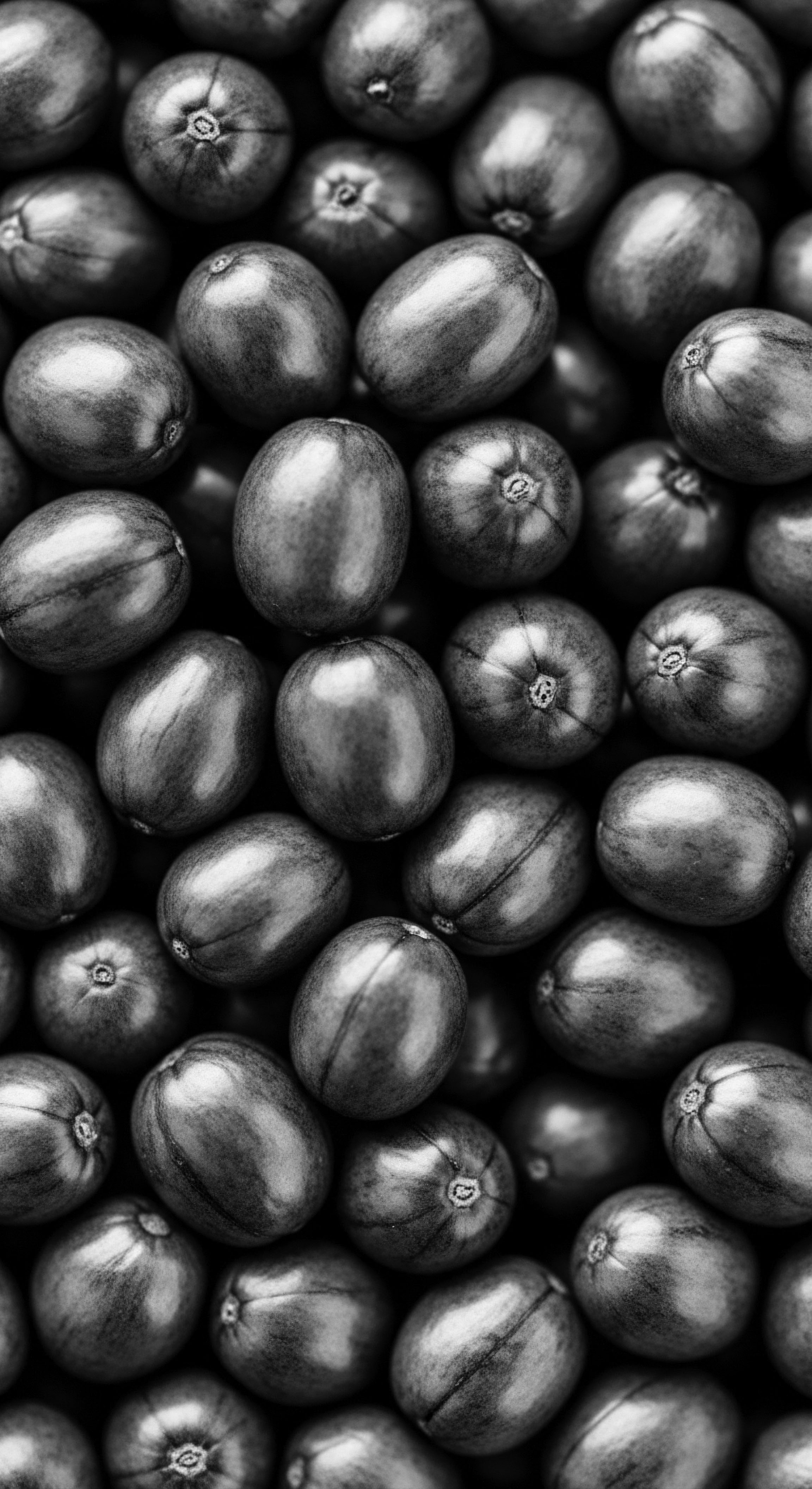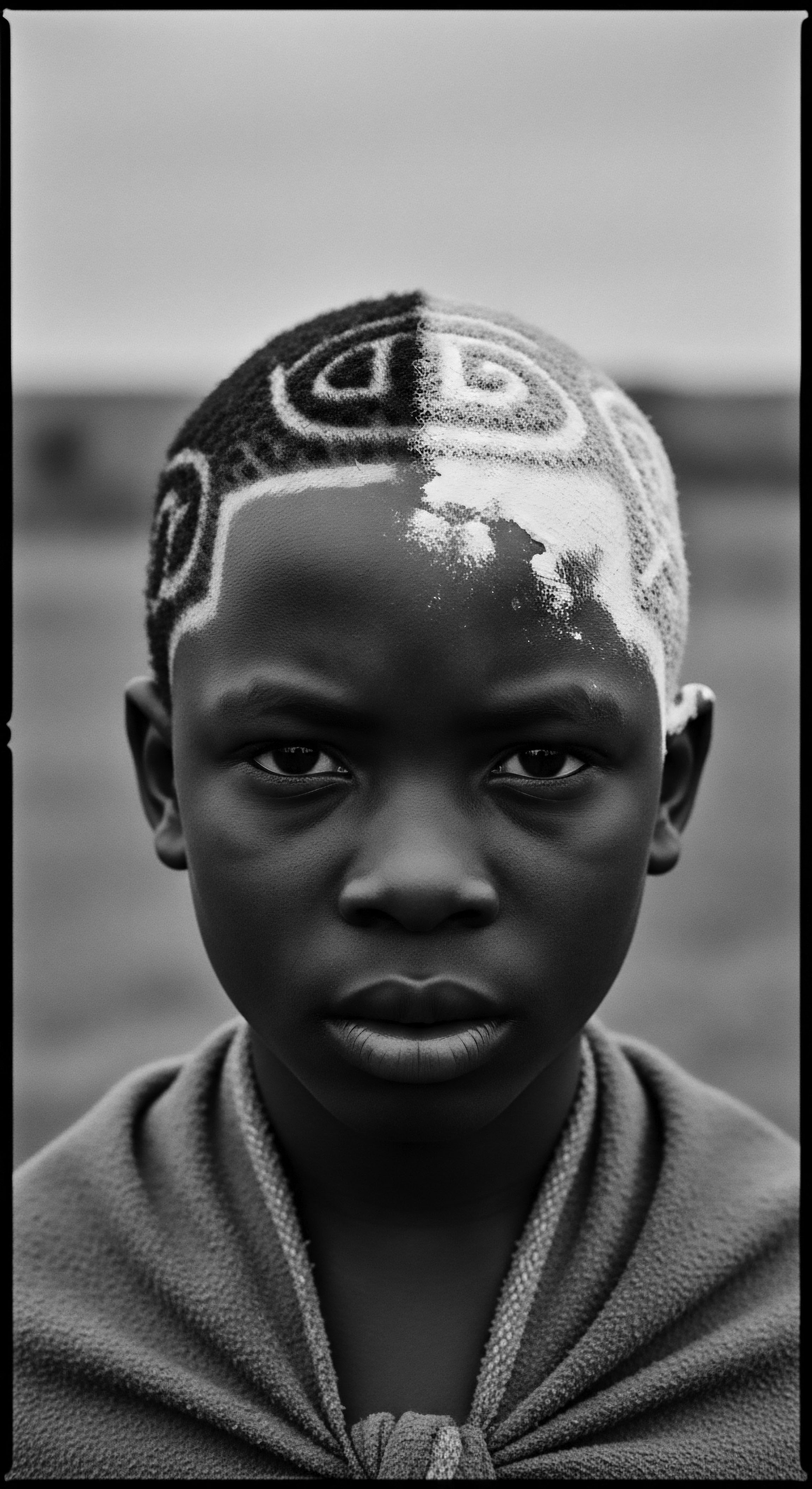
Roots
The vitality of our hair, particularly the intricate curls and coils that tell stories of generations, has always been more than surface deep. It is a whisper from our ancestors, a living testament to practices passed down through time. When we consider how ancestral nourishment might strengthen our hair, we are not simply contemplating a biological process. We are delving into a lineage, a connection to ways of living that understood the profound reciprocity between the earth’s bounty and the vigor of the human spirit, including the very strands that crown our heads.
Across various cultures of the diaspora, meals were never just about sustenance; they were about a holistic thriving. This encompassed the strength of the body, the clarity of the mind, and the radiant health of our hair. The wisdom of our forebears, often cultivated through necessity and deep observation, recognized that what we consume echoes in the very architecture of our being. This understanding, often held in unspoken traditions and the rhythms of daily life, forms the bedrock of how specific dietary patterns could contribute to hair’s resilience.

Anatomy of Textured Hair From an Ancestral Perspective
The unique helical structure of textured hair, with its elliptical follicle shape and varied curl patterns, distinguishes it from straighter hair types. This structural difference means textured hair, by its very nature, tends to be more prone to dryness and breakage due to fewer cuticle layers lying flat, allowing moisture to escape more readily. Ancestral communities, keenly observant of these intrinsic qualities, understood that hydration and fortification were paramount.
Their dietary wisdom, perhaps without modern scientific terminology, implicitly addressed these needs. They knew, through centuries of empirical knowledge, that certain foods provided a ‘lubrication from within’ and a ‘building block from the ground up’ for these precious strands.
Consider the Papilla, the small, cone-shaped indentation at the base of the hair follicle that houses the capillaries supplying blood and nutrients. For our ancestors, ensuring this tiny, vibrant hub received abundant nourishment was intuitive. Meals rich in certain elements fostered robust blood flow, ensuring the necessary building blocks reached the hair at its nascent stage. This deep understanding of nourishment, though perhaps not articulated in microscopic detail, was manifest in their selection of ingredients and culinary traditions.

How Did Historical Environmental Factors Influence Hair Health?
The environments in which many ancestral communities resided posed unique challenges to hair health. Harsh sun, arid climates, or humid, often challenging conditions demanded dietary responses that built internal resilience. Foods providing natural UV protection, those rich in antioxidants to combat environmental stressors, and ingredients that supported moisture retention became staples.
The integration of these foods into daily meals served as an internal shield, protecting the hair follicle and shaft from degradation. This historical interplay between environment and diet is a cornerstone of understanding ancestral hair care.
The legacy of heritage meals speaks to a profound ancestral understanding of the intricate connection between internal nourishment and the vibrant health of textured hair.
The knowledge wasn’t just about what to eat, but how to prepare it to maximize its nutritional value. Fermentation, slow cooking, and the combination of certain ingredients were not arbitrary culinary choices. They were often sophisticated methods of nutrient bioavailability, enhancing the body’s ability to draw sustenance that would, in turn, fortify hair. This practical science, honed over millennia, stands as a testament to the ingenuity of ancestral practices.
- Yams ❉ A foundational staple across many African diasporic diets, providing complex carbohydrates for sustained energy to cells, including those in the hair follicle.
- Leafy Greens ❉ Often found in stews and gumbos, offering a spectrum of vitamins and minerals vital for cellular regeneration and blood circulation to the scalp.
- Legumes ❉ Such as black-eyed peas or lentils, were protein powerhouses, providing the amino acids essential for keratin synthesis, the primary protein of hair.
The very nomenclature we use today for hair types, while seemingly modern, often carries echoes of historical perception. Terms describing hair’s resilience or fragility were often linked to its inherent structure and how well it fared in various conditions. Our understanding of how heritage meals bolster hair begins with appreciating the inherent nature of textured hair and the environmental realities our ancestors navigated, shaping their culinary wisdom.
| Traditional Food Category Root Vegetables (e.g. Carrots, Sweet Potatoes) |
| Potential Hair Benefit via Ancestral Diets Beta-carotene for cell growth and sebum production, supporting scalp health and hair luster. |
| Traditional Food Category Oily Fish (where available, e.g. Mackerel) |
| Potential Hair Benefit via Ancestral Diets Omega-3 fatty acids for anti-inflammatory effects on the scalp and follicle nourishment. |
| Traditional Food Category Seeds and Nuts (e.g. Sesame, Peanuts) |
| Potential Hair Benefit via Ancestral Diets Zinc and biotin, crucial for hair growth cycles and preventing breakage. |
| Traditional Food Category Fermented Foods (e.g. Sourdough, Pickles) |
| Potential Hair Benefit via Ancestral Diets Gut health support, influencing nutrient absorption for overall cellular vitality, including hair. |
| Traditional Food Category These dietary cornerstones provided the internal sustenance for hair resilience across ancestral communities. |

Ritual
The sustenance from heritage meals extends beyond mere biological input; it intertwines with the very rituals of daily life, transforming the act of eating into an expression of care that reverberates through our physical being, including our hair. The notion of ‘food as medicine’ was not a novel concept but a deeply ingrained cultural practice for many Black and mixed-race communities. This philosophy meant that meals were thoughtfully composed not only for flavor but for their perceived restorative properties, contributing to systemic health which, in turn, nourished the hair from its deepest roots.
Consider the communal meal, a setting where stories were shared, wisdom imparted, and bonds strengthened. The very act of preparing and consuming food together carried an energetic resonance, a collective intention of wellbeing that contributed to the holistic nourishment of the individual. This shared experience, often centered around nutrient-dense dishes, created an environment where the body was supported in its natural processes of growth and repair, a crucial element for hair vitality.

How Do Cooking Methods of Heritage Meals Preserve Hair-Bolstering Nutrients?
Traditional cooking methods, often slow and deliberate, were not simply about taste. They were sophisticated strategies for unlocking and preserving the full spectrum of nutrients within ingredients. Slow-simmered stews, for instance, allowed collagen from bones and connective tissues to break down into easily absorbable amino acids, which are the fundamental building blocks of keratin, the protein that forms the majority of hair. These methods minimized nutrient loss through excessive heat or rapid cooking.
The practice of cooking vegetables with their skins, or using every part of an animal, speaks to a heritage of resourcefulness and maximal nutrient extraction. For example, the gelatinous broths made from simmering animal bones (a common practice in many ancestral cuisines) were rich in amino acids like glycine and proline, compounds that are instrumental in collagen formation within the body. Collagen is a key structural protein, and while not directly forming hair, its precursors support healthy connective tissues, which can aid in scalp health and blood flow to the hair follicles.
The preparation of heritage meals, through its deliberate methods, served as an unseen ritual of hair fortification, extracting and preserving essential nutrients for systemic wellbeing.

Seasonal Eating and Hair Cycles Through Ancestral Eyes
Ancestral eating patterns were inherently seasonal, dictated by the rhythm of nature and local harvests. This alignment with seasonal availability meant a natural variation in nutrient intake throughout the year. For instance, in periods when leafy greens were abundant, the diet would be rich in vitamins A, C, and E, and various B vitamins – all known to support hair growth and scalp health.
As seasons shifted, other nutrient profiles would become prominent, ensuring a dynamic and comprehensive intake. This adaptive dietary practice, though driven by necessity, inadvertently supported the body’s cyclical needs, potentially harmonizing with the hair growth cycles.
The historical context of food scarcity also fostered a profound appreciation for every edible part of a plant or animal. This meant consuming organ meats, often discarded in modern diets, which are dense sources of iron, B vitamins, and zinc – all vital for preventing hair shedding and promoting robust growth. The deliberate inclusion of such nutrient-rich, often less palatable, components in traditional dishes underscores a pragmatic approach to holistic health, with hair health as an implicit beneficiary.
- Oxtail Stew ❉ A dish celebrated across the diaspora, often slow-cooked to break down collagen and deliver a wealth of amino acids.
- Okra Soup ❉ The mucilage (slippery substance) in okra, while texturally unique, contains polysaccharides that can assist in gut health, indirectly supporting nutrient absorption for hair.
- Grains and Pseudocereals ❉ Such as fonio or millet, provided essential complex carbohydrates and often specific amino acids not readily found in other plant sources, contributing to overall protein intake for hair structure.
The ritual of shared meals also extended to specific practices around particular foods. For instance, the consumption of certain herbs or spices, known for their warming properties or their ability to aid digestion, was part of a broader understanding of how the body worked as an integrated system. A healthy digestive system, a concept well understood in traditional healing, directly correlates to the efficient absorption of nutrients essential for hair vitality. This nuanced approach, steeped in communal practice and inherited wisdom, painted a picture of hair nourishment far beyond simple calorie counting.

Relay
The legacy of heritage meals, particularly within textured hair traditions, extends beyond mere sustenance; it operates as a sophisticated relay of biological signals and cultural markers, shaping not only our physical being but our very identity. The scientific lens, when applied to ancestral culinary practices, frequently reveals complex biochemical interactions that substantiate the long-held wisdom of communities. This relay of information, from the cellular level to the communal table, offers a compelling framework for understanding how deep nourishment from our past continues to fortify our present.
One might consider the microbiome, the complex ecosystem of microorganisms residing within our gut. Contemporary research increasingly highlights its pivotal role in nutrient absorption, immune function, and systemic inflammation—factors that directly impact hair health. Many heritage meals, through their traditional preparation methods, were naturally abundant in prebiotics (fibers that feed beneficial gut bacteria) and probiotics (beneficial live bacteria). Fermented foods like kimchi, sourdough bread, and certain African fermented porridges, staples in various diasporic cuisines, actively contributed to a robust gut flora.
A healthy gut ensures that the vitamins, minerals, and amino acids from our diet are efficiently absorbed, becoming readily available for processes like keratin synthesis and melanin production, both crucial for hair structure and pigment. (O’Hara & Shanahan, 2014)

How Do Specific Phytochemicals From Ancestral Diets Support Hair Growth?
Ancestral diets were rich in a diverse array of plant-based foods, each containing unique phytochemicals. These naturally occurring compounds, often overlooked in modern nutrition, possess potent antioxidant and anti-inflammatory properties. For instance, the deep greens of callaloo or collard greens, common in many Black communities, are packed with vitamins A, C, and K, alongside powerful antioxidants like lutein and zeaxanthin. These not only combat oxidative stress on the scalp, which can inhibit hair growth, but also support microcirculation to the hair follicles, ensuring a steady supply of nutrients.
Similarly, the prevalence of spices like turmeric in some diasporic culinary traditions introduces curcumin, a compound studied for its anti-inflammatory and angiogenic (blood vessel formation) properties. While direct studies on curcumin and textured hair growth are still developing, its systemic benefits on inflammation and circulation provide a plausible mechanism by which heritage meals contributed to hair resilience. The synergy of these plant compounds within complex meals, a concept deeply ingrained in traditional foodways, far surpasses the efficacy of isolated supplements.
The intricate interplay of gut microbiome health and the diverse phytochemicals present in heritage meals forms a biological relay, transmitting strength to every hair strand.

The Epigenetic Echoes of Ancestral Nutrition and Hair Health
The concept of epigenetics, the study of how environment and behavior can cause changes that affect the way genes work, offers a profound connection to heritage meals. While our genetic predisposition dictates our hair type, nutritional inputs from our ancestors, and indeed our own diets, can influence gene expression. For example, specific nutrients found in heritage foods – such as B vitamins, zinc, and folate – act as ‘methyl donors,’ influencing epigenetic processes that can regulate hair follicle development and hair cycle progression.
A case study from the Pima people, for instance, highlights how drastic shifts in diet from traditional, nutrient-dense foods to processed Western diets led to increased rates of diabetes and other health issues. While not directly hair-focused, such shifts in systemic health have cascading effects, often observed in hair quality, shedding, and overall vitality. The traditional Pima diet, rich in legumes, corn, and wild plants, provided a spectrum of nutrients that supported metabolic health, indirectly bolstering the resources available for robust hair growth.
(Knowler et al. 1993) This suggests that the legacy of a nutrient-rich ancestral diet can, through epigenetic mechanisms, continue to confer a degree of resilience, even if subtly, to subsequent generations’ hair health.
The interplay of traditional foods with the body’s intricate systems provides a compelling scientific validation for ancestral wisdom. The sustained consumption of iron-rich foods, for example, common in many heritage meals (e.g. from green leafy vegetables or modest amounts of red meat), directly counters iron-deficiency anemia, a well-documented cause of hair shedding. The holistic nature of these meals, addressing multiple nutrient needs simultaneously, meant a comprehensive approach to health that modern singular supplementations often cannot replicate.
- Protein Synthesis ❉ Heritage meals frequently supplied a full complement of amino acids through diverse protein sources like legumes, grains, and animal proteins, essential for keratin production.
- Vitamin and Mineral Delivery ❉ Traditional preparations maximized the bioavailability of vitamins (e.g. A, C, E, B-complex) and minerals (e.g. iron, zinc, selenium) crucial for hair follicle function and preventing brittle strands.
- Anti-Inflammatory Compounds ❉ Abundant antioxidants and anti-inflammatory agents from traditional fruits, vegetables, and spices mitigated scalp inflammation, fostering a healthier environment for hair growth.
- Gut Health Support ❉ Fermented foods and dietary fiber promoted a balanced gut microbiome, optimizing nutrient absorption and systemic health, which directly impacts hair vitality.
The very concept of a “balanced meal” in many ancestral contexts was intrinsically tied to seasonal availability and the comprehensive utilization of local resources. This meant that the plates were often colorful and diverse, naturally delivering the broad spectrum of macronutrients and micronutrients that collectively fortify hair from the inside out. This profound intelligence, distilled over countless generations, continues to relay its benefits through the very fibers of our textured hair.

Reflection
To contemplate how heritage meals bolster hair is to embark upon a profound meditation on the enduring legacy of ancestral wisdom. Our textured hair, in its intricate spirals and resolute strength, carries not only our genetic code but the echoes of the culinary traditions that sustained generations. It is a living, breathing archive of resilience, forged in kitchens where food was prepared with intention, knowing its power to nourish beyond the immediate hunger. The ‘Soul of a Strand’ whispers of this deep connection, reminding us that the health of our hair is inextricably linked to the earth’s rhythm and the heritage of our people.
The vibrant hues of yams and collard greens, the earthy aroma of slow-simmered stews, the comforting warmth of traditional grains—these are not just tastes and textures. They are coded messages from the past, instructions for wellbeing that continue to serve us today. In embracing these foods, we do more than feed our bodies; we honor a continuous lineage of care, a practice that understood the nuanced dance between internal vitality and external radiance.
Our hair, a magnificent crown, becomes a visible celebration of this inherited wisdom, its strength a testament to the timeless nourishment drawn from the roots of our collective history. The story of how heritage meals fortify textured hair is, ultimately, the story of returning home, to a wisdom that has always known the path to holistic thriving.

References
- Knowler, W. C. Bennett, P. H. Hamman, R. F. & Miller, P. (1993). Diabetes Incidents and Mortality in Pima Indians. The American Journal of Epidemiology, 137(10), 1030-1031.
- O’Hara, A. M. & Shanahan, F. (2014). The Gut Microbiota and Health. John Wiley & Sons.
- Davis, E. H. (1960). Indian Corn in Old America. Macmillan.
- Campbell, M. L. (2009). Afro-Caribbean Herbal Remedies. A & C Black.
- Goody, J. (1982). Cooking, Cuisine and Class ❉ A Study in Comparative Sociology. Cambridge University Press.
- Mintz, S. W. (1996). Sweetness and Power ❉ The Place of Sugar in Modern History. Penguin Books.
- Pollan, M. (2006). The Omnivore’s Dilemma ❉ A Natural History of Four Meals. Penguin Press.
- Nestle, M. (2007). Food Politics ❉ How the Food Industry Influences Nutrition and Health. University of California Press.
